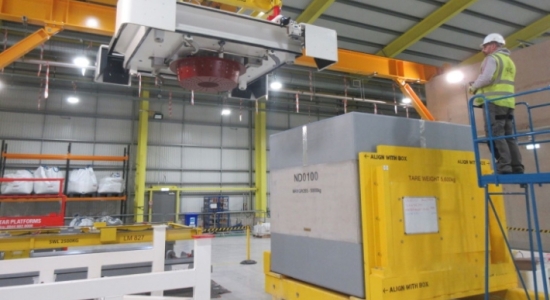The first concrete box containing radioactive waste from underground vaults at the shut down Berkeley nuclear power plant in the UK has been transferred to an interim on-site storage facility, Magnox Ltd announced.
"The transfer is a landmark for Magnox's mission to clean-up the UK's former civil nuclear sites, involving the development of a brand new waste storage package and innovative waste retrieval techniques," the company said.
The operation involved the removal and transfer of intermediate-level waste into newly-designed concrete boxes using novel remote handling tools and techniques before moving it into the storage facility.
The first concrete box of waste has now been filled and safely stored at the site, pending long-term disposal in a future geological disposal facility.
"Leading the way with this trailblazing, first-of-a-kind work, the team has installed technology which enables remote access to Berkeley’s underground waste vaults to safely retrieve, package and treat intermediate-level waste," said Berkeley Site Director Mike Heaton.
The Office for Nuclear Regulation (ONR) authorised the use of the concrete storage boxes as a suitable container for the transport of the waste from the vaults into the interim storage facility.
"It has taken many years of planning and work to reach the point of being able to retrieve waste from the vaults and store it in concrete boxes in a modern safe interim storage facility, and I would like to congratulate all those involved in achieving this significant milestone," said Paul Jenneson, ONR's Berkeley Site Inspector. "Getting to this stage has been a result of a sustained programme of productive and open dialogue and engagement between the regulator and the licensee, Magnox Ltd.
"Given its success, we expect that Magnox will be able to utilise learning from the novel approach taken at Berkeley to help accelerate decommissioning work at some of its other sites."
Magnox said the transfer of the waste "marks another successful delivery of Magnox's commitment to safe hazard reduction which has already seen the demolition of buildings and removal of redundant equipment at Berkeley, including the site's 310-tonne steel boilers, all 15 of which were sustainably recycled for future use".
It is expected to take between four and five years to remove the full inventory of waste from the vaults at Berkeley.
Berkeley's two Magnox units were shut down in the late 1980s after more than a quarter of a century of electricity generation. In 1992, Berkeley was the first Magnox site to complete defueling and later became the first to decommission its fuel storage ponds.
In 2010, after 21 years of decommissioning work, the units became the first to be sealed up and placed in 'safestor', a passive state in which the defuelled and extensively decommissioned units will be monitored and maintained until the site is completely cleared in about 65 years' time.
The Berkeley site housed some 620 tonnes of metallic fuel element debris and 6665 containers - some of which are sludge cans - in three underground vaults. A single silo houses charge rods and the chutes used to discharge fuel from the site's two Magnox reactors.
Photo: The first concrete box of waste is put into the interim storage facility at Berkeley (Image: ONR)
- 10 views



